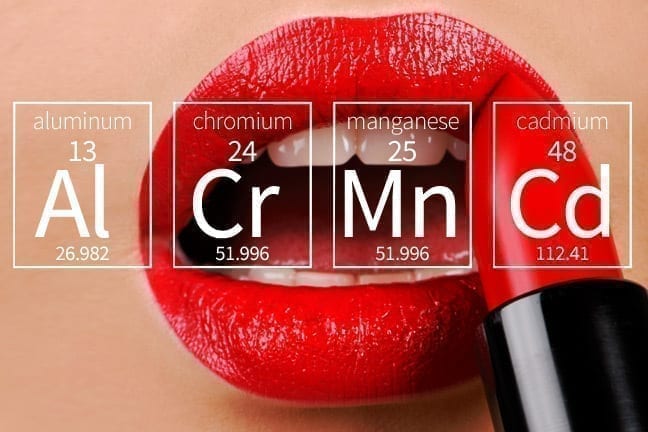Building on the lead-in-lipstick scares of recent years, a May 2013 study in the journal Environmental Health Perspectives reveals how much lead, cadmium, aluminum and other metals you ingest every time you swipe a bold shade across your lips. The results aren’t too pretty, but don’t toss the gloss just yet.Researchers from the School of Public Health at U.C. Berkeley tested 32 drugstore and designer lipsticks and glosses for nine metals, including lead, aluminum, cadmium, chromium and manganese, exposure to all of which may have cancer-causing or neurotoxic effects. They found manganese, titanium, chromium, nickel and aluminum in practically every product, lead in 75 percent of them and cadmium in nearly half.MORE: The Truth About Lead and LipstickThat sounds bad, but it’s not necessarily surprising—or worrisome. Metals are used to make the pigments that make your favorite lipsticks that perfect shade of whatever. They are then washed out before the pigments are sold to cosmetics companies, but the process is difficult and the government gives companies a little leeway to sell products with small amounts of metallic remnants. Lead, for instance, may be present in pigments up to 20 parts per million. The limit is substantially lower for the allowable amount of lead in candy, 0.1 parts per million. The difference is that you eat candy (and so do kids, who are particularly susceptible to lead poisoning), so whatever gets in the treat gets in your body.That’s where this new study gets interesting.While past research has looked at how much metal is in a tube of lipstick, this study takes it a step further and estimates how much you’re actually ingesting. They measured how much product goes on your lips each time you apply (10 milligrams) and multiplied that by how many times you reapply. It adds up to 24 miligrams a day for average use (roughly twice daily) and 87 miligrams for heavy use (seven or eight complete touchups). It’s an important distinction, but the authors’ methodology is questionable. Their calculations are based on the assumption that all the color you put on your pout works its way into your mouth. This is probably fair if you never blot, wipe your mouth, chew on your pencil, or eat or drink after application. Doesn’t sound likely, does it?MORE: Skincare Tips For Luscious LipsBut for the sake of argument, let’s say you abstain from any mouth-related activities outside talking and licking your lips between the time you put on lipstick and the time it wears away completely. How much metal are you eating on a daily basis?According to the paper, usually a small fraction of a microgram (a grain of salt weighs about 36 micrograms). Based on average use, only chromium showed up in amounts exceeding suggested exposure limits, in a third of the products. For heavy use (compulsive re-appliers, take note), potentially unhealthy amounts of aluminum, manganese and chromium were found in one, seven and 22 samples, respectively. Of the leaded lipsticks, 15 had more of the element than you might find in a lollipop.The Berkeley research broadens the point of focus from lipstick’s lead content to how much other hazardous metal may be hiding in your hue. Would we recommend ditching lipstick for good? Not so much. Just try not to eat it.MORE: The Best Bright Lips For Your Skintone
© YouBeauty 2024




































